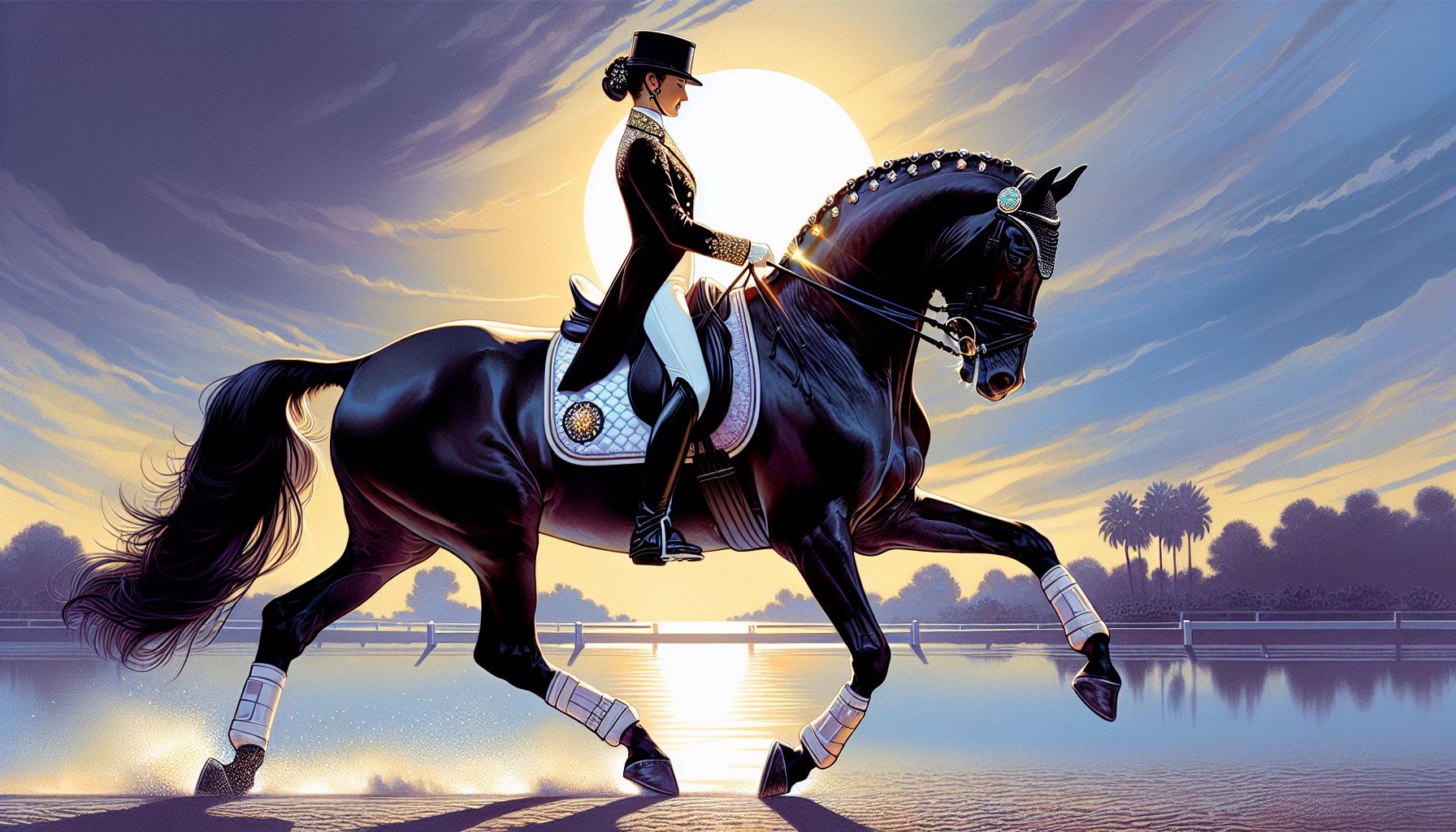Have you ever witnessed the exquisite beauty and grace of a horse and rider performing in perfect synchrony? If so, you may have caught a glimpse of the art of dressage. Dressage, pronounced as “druh-sahj,” is an equestrian discipline that combines elegance, precision, and harmony between horse and rider. Often described as ballet on horseback, dressage is not just a sport but an art form that celebrates the connection between humans and these magnificent creatures. So, let’s dive into the world of dressage, where horses become dancers, and riders become choreographers.
The Basics: What is Dressage?
Originating from the French word “dresser,” meaning “to train,” dressage focuses on the systematic training and development of a horse’s natural athleticism and responsiveness. It is a unique discipline that aims to create a horse that responds willingly, softly, and obediently to the rider’s aids, resulting in a partnership built on trust and communication.
Dressage can be viewed at various levels, from the introductory levels where basics are established to the highest levels of international competition, such as the Olympic Games. The discipline is governed by international organizations like the Fédération Equestre Internationale (FEI) and has its own set of standardized movements, tests, and scoring criteria.
Crafting a Masterpiece: The Rider’s Role
In dressage, the rider assumes the role of both trainer and performer. A skilled dressage rider possesses a deep understanding of the horse’s biomechanics, psychology, and training techniques. They must demonstrate finesse, balance, and control while subtly communicating with the horse through their body language and aids.
Effective communication between horse and rider is achieved through a combination of the rider’s seat, legs, and hands. The seat acts as the primary aid, with subtle shifts in weight conveying the desired movements. The legs provide guidance and direction, while the hands maintain proper contact with the horse’s mouth through the reins, allowing for fine-tuned control and connection.
The Horse’s Journey: Training and Development
Just as a craftsman molds clay into a masterpiece, dressage involves molding a horse into a flexible, strong, and willing partner. The journey begins with basic training exercises to develop the horse’s balance, flexibility, and rhythm. Through a combination of lunging, long-reining, and under-saddle work, the horse gradually learns to respond to the rider’s cues.
As the horse progresses, they embark on a path of specialization, where they learn precise movements called “dressage figures.” These figures, performed on straight lines, circles, diagonals, and voltes, include lateral movements like shoulder-in, haunches-in, and half-pass, as well as collected and extended gaits, pirouettes, and flying changes.
Training a dressage horse requires patience, sensitivity, and an understanding of each horse’s unique strengths and limitations. It is a journey of mutual learning and trust-building, where the horse’s physical and mental development is given the utmost priority.
The Artistry of Dressage: Music, Freestyle, and Choreography
While the technicality of dressage is impressive, the artistic side truly brings the sport to life. In freestyle dressage competitions, known as “Kür,” horse and rider unleash their creativity and choose their own music and choreography. The outcome is a stunning fusion of classical movements, elegant music, and precise footwork.
Freestyle routines often incorporate difficult movements, such as piaffe, passage, and tempi changes, performed seamlessly to the rhythm of the music. Each horse’s individual strengths and character are accentuated through choreographed movements that complement their unique style.
Witnessing a freestyle dressage performance is like attending a captivating ballet recital, with the horse as the lead dancer and the rider as the choreographer. It is an enchanting display of harmony, athleticism, and teamwork.
Dressage Benefits: More Than Just Sport
Beyond the incredible beauty and artistry, dressage offers numerous benefits for both horse and rider. The training involved in dressage improves the horse’s strength, coordination, and flexibility, contributing to their overall physical health and well-being. Mentally, dressage builds their focus, responsiveness, and willingness to work with a rider.
For riders, dressage provides an opportunity to form a deep bond with their equine partner. It requires patience, empathy, and an exceptional level of communication. Dressage cultivates discipline, self-control, and perseverance, qualities that transcend the equestrian arena and positively impact other areas of life.
Conclusion: Discover the Magic of Dressage
Dressage is a captivating blend of athleticism, artistry, and partnership between humans and horses. It is an art form that celebrates the unique connection between two species, creating a beautiful harmony that is mesmerizing to behold.
So, the next time you witness a dressage performance, take a moment to appreciate the countless hours of training, the journey of trust, and the artistry unfolding before you. Through dressage, horses become not just our companions, but our dance partners in the greatest performance of all.
